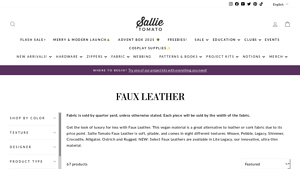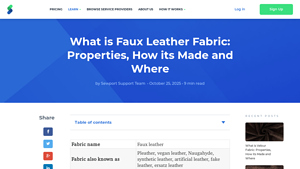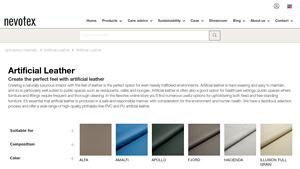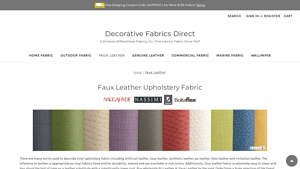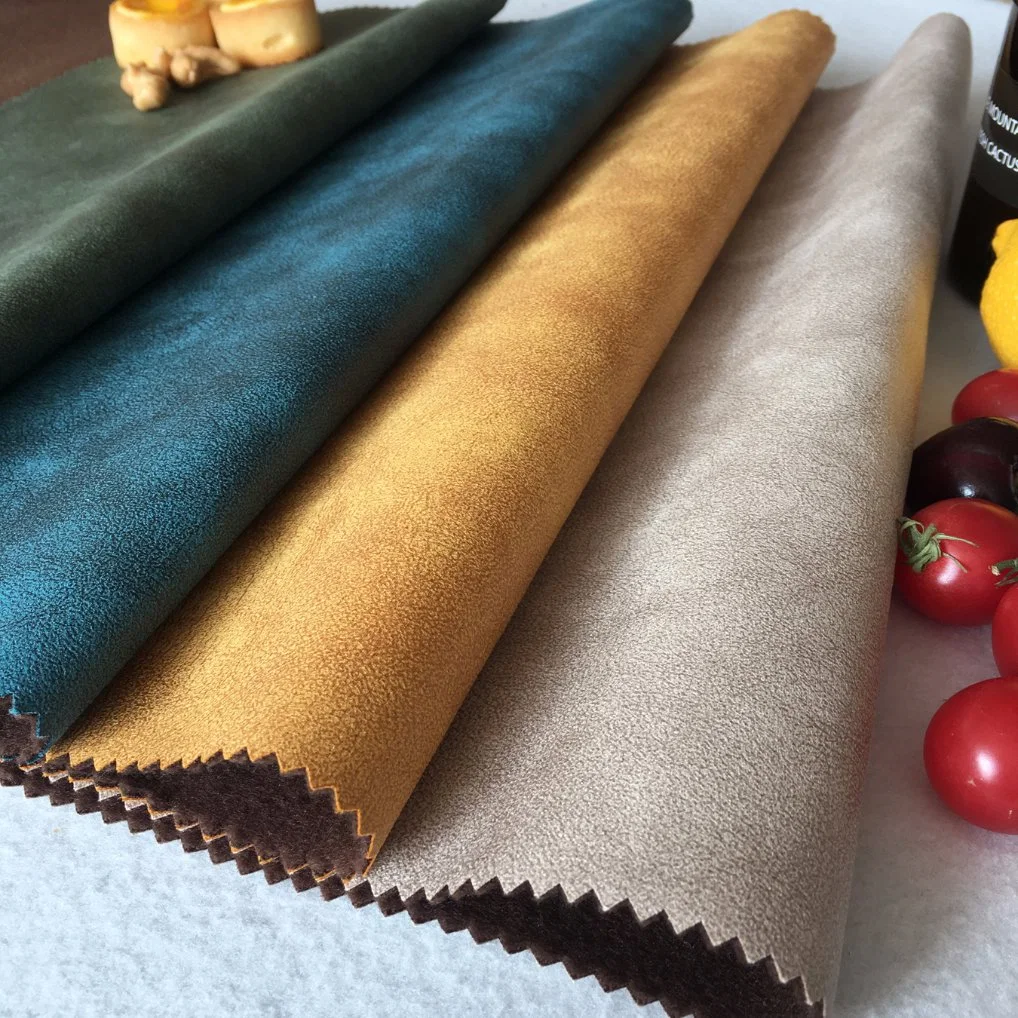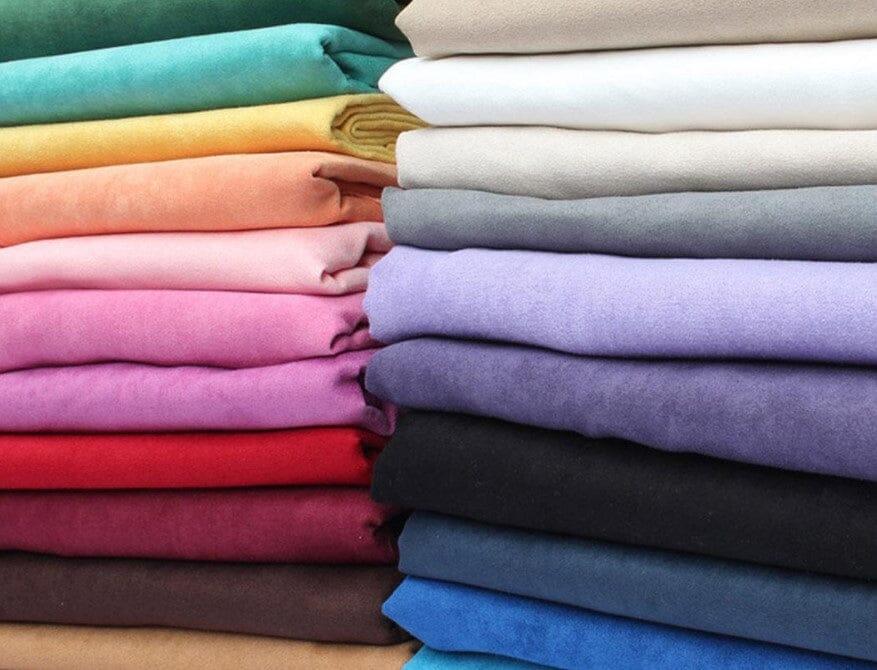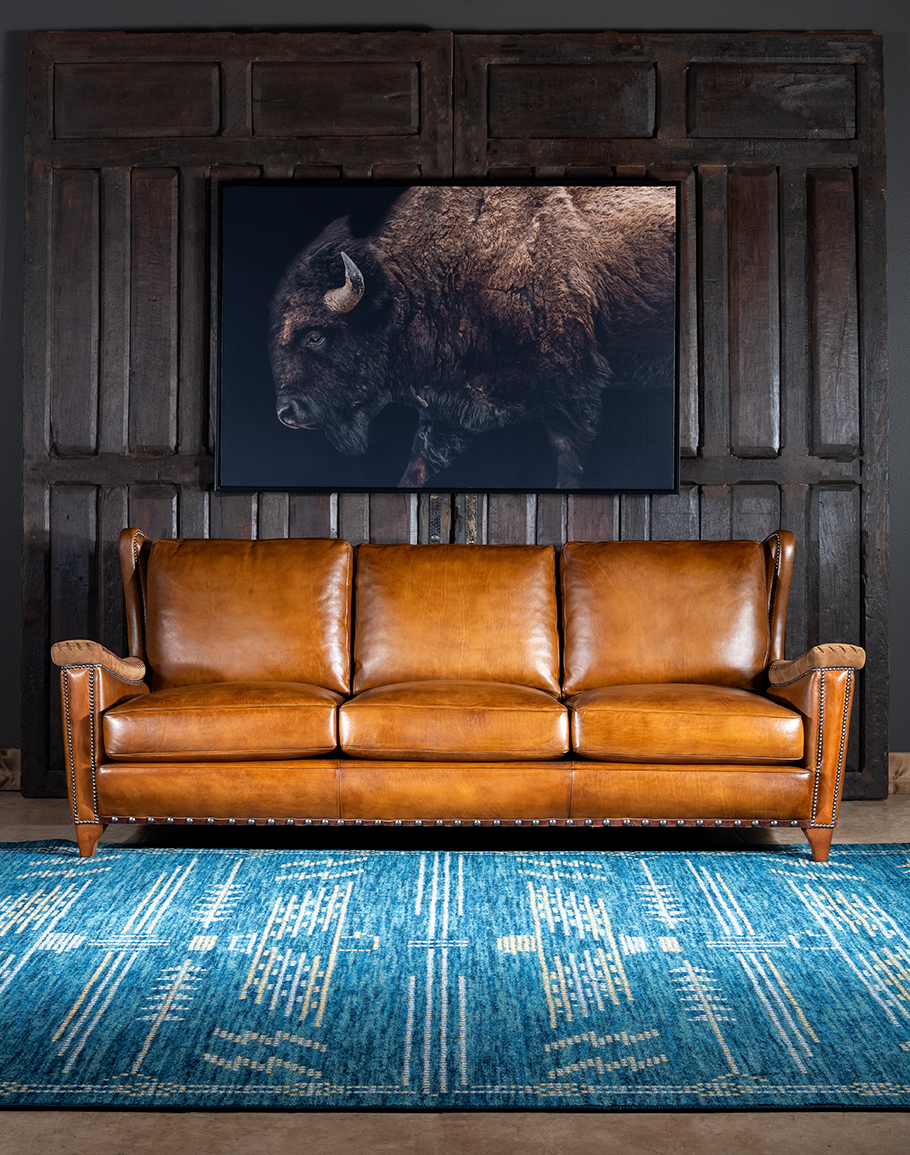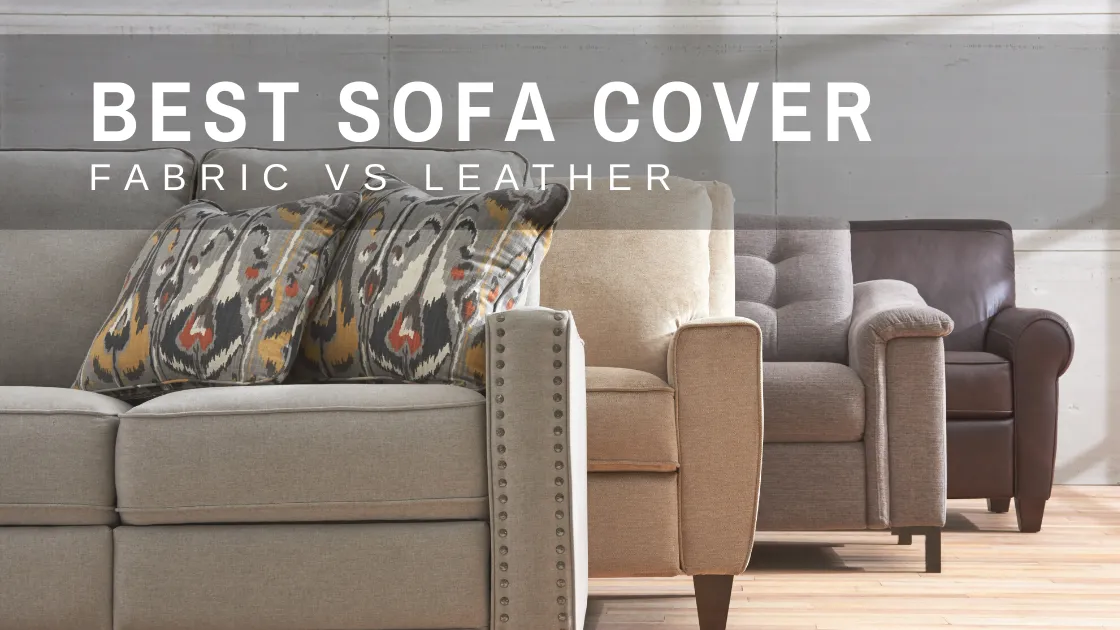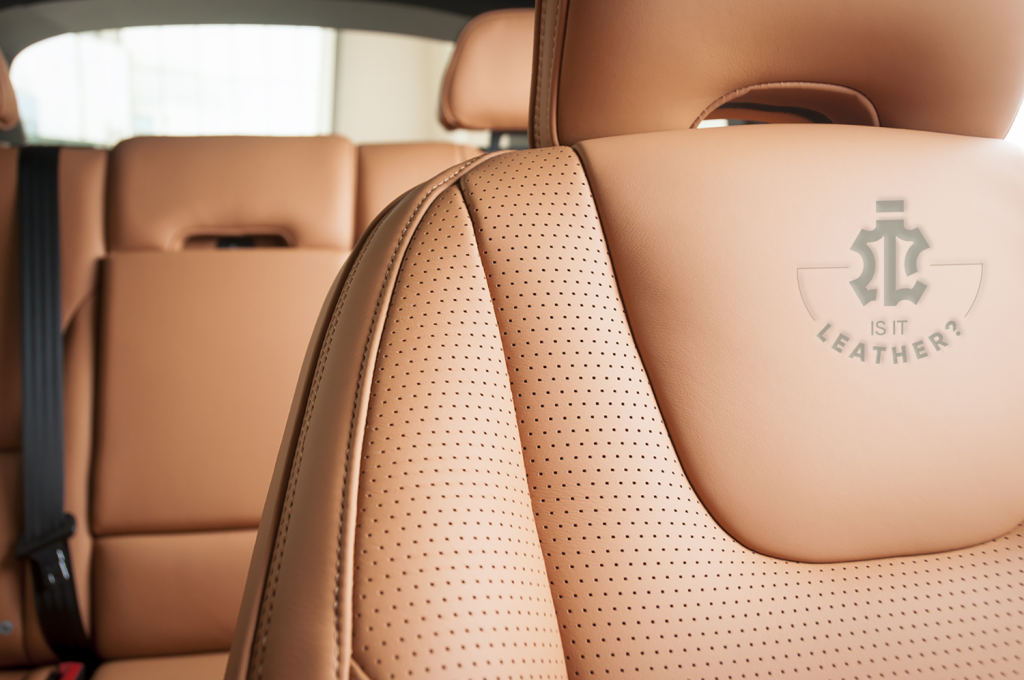Introduction: Navigating the Global Market for artificial leather
In today’s competitive marketplace, sourcing high-quality artificial leather can present a significant challenge for international B2B buyers. The rise of eco-conscious consumers has propelled demand for alternatives to traditional leather, making it crucial for businesses in Africa, South America, the Middle East, and Europe to understand the nuances of this versatile material. This comprehensive guide delves into the various types of artificial leather, including polyurethane (PU) and polyvinyl chloride (PVC), and explores their applications across diverse industries, from automotive upholstery to fashion accessories.
With a focus on supplier vetting processes and cost considerations, this resource empowers B2B buyers to make informed purchasing decisions. By providing insights into the latest market trends and product specifications, the guide helps businesses navigate the complexities of sourcing artificial leather effectively. Whether you’re looking to enhance your product offerings or seeking sustainable solutions for your manufacturing needs, understanding the characteristics and benefits of artificial leather will be instrumental in achieving your goals.
By leveraging this guide, buyers can ensure they select the right materials that align with their operational requirements and consumer expectations, thus positioning themselves advantageously in the global market.
Table Of Contents
- Top 4 Artificial Leather Manufacturers & Suppliers List
- Introduction: Navigating the Global Market for artificial leather
- Understanding artificial leather Types and Variations
- Key Industrial Applications of artificial leather
- 3 Common User Pain Points for ‘artificial leather’ & Their Solutions
- Strategic Material Selection Guide for artificial leather
- In-depth Look: Manufacturing Processes and Quality Assurance for artificial leather
- Practical Sourcing Guide: A Step-by-Step Checklist for ‘artificial leather’
- Comprehensive Cost and Pricing Analysis for artificial leather Sourcing
- Alternatives Analysis: Comparing artificial leather With Other Solutions
- Essential Technical Properties and Trade Terminology for artificial leather
- Navigating Market Dynamics and Sourcing Trends in the artificial leather Sector
- Frequently Asked Questions (FAQs) for B2B Buyers of artificial leather
- Strategic Sourcing Conclusion and Outlook for artificial leather
- Important Disclaimer & Terms of Use
Understanding artificial leather Types and Variations
| Type Name | Key Distinguishing Features | Primary B2B Applications | Brief Pros & Cons for Buyers |
|---|---|---|---|
| Skóra PU | Soft, supple feel; resembles genuine leather closely. | Furniture upholstery, automotive interiors, fashion items. | Pros: Affordable, easy to clean. Cons: Less breathable than genuine leather. |
| Skóra PVC | Durable with high resistance to water and stains. | Marine applications, outdoor furniture, commercial settings. | Pros: Cost-effective, waterproof. Cons: Can be less flexible than PU leather. |
| Skóra wegańska | Made from non-animal materials, often plant-based. | Eco-friendly products, fashion, and accessories. | Pros: Sustainable, animal-friendly. Cons: May lack durability compared to other types. |
| Skóra z mikrofibry | Ultra-soft texture, mimics suede; breathable. | High-end fashion, automotive interiors, luxury upholstery. | Pros: Soft, luxurious feel. Cons: Can be more expensive. |
| Synthetic Suede | Soft and textured, with a suede-like finish. | Apparel, bags, and interior furnishings. | Pros: Affordable alternative to suede. Cons: Less durable than genuine suede. |
What Are the Key Characteristics of PU Leather for B2B Buyers?
PU leather is a synthetic alternative that closely mimics the look and feel of genuine leather. It is produced by coating a fabric base with a polyurethane layer, resulting in a soft, flexible material that is often indistinguishable from real leather. This type of artificial leather is widely used in furniture upholstery, automotive interiors, and various fashion items. B2B buyers should consider its affordability and ease of maintenance, though it may not offer the same breathability as genuine leather, which could be a factor in certain applications.
How Does PVC Leather Stand Out in the Market?
PVC leather, known for its exceptional durability, is created using polyvinyl chloride, which provides high resistance to water and stains. It is particularly popular in marine applications and outdoor furniture due to its waterproof qualities. Businesses in sectors requiring robust materials, such as commercial settings, often choose PVC leather for its cost-effectiveness. However, buyers should note that while PVC leather is durable, it may not be as flexible as PU leather, which could impact comfort in applications like clothing or automotive interiors.
Why Choose Vegan Leather for Eco-Conscious B2B Purchases?
Vegan leather is crafted from non-animal materials, making it an appealing choice for businesses focused on sustainability. Often made from plant-based materials or recycled synthetics, vegan leather is increasingly used in eco-friendly products, fashion, and accessories. B2B buyers can leverage this material to enhance their brand’s sustainability profile. However, while vegan leather is an ethical choice, its durability may not match that of PU or PVC leather, which is a consideration for high-wear applications.
What Are the Advantages of Microfiber Leather in Luxury Markets?
Microfiber leather offers a luxurious, ultra-soft texture that closely resembles suede, making it a preferred choice for high-end fashion and automotive interiors. Its breathability and aesthetic appeal make it suitable for luxury upholstery. B2B buyers in the luxury market should consider microfiber leather for its premium feel, although it typically comes at a higher price point than other synthetic options. Its softness may also lead to increased wear if not properly maintained, which is another factor to keep in mind.
How Does Synthetic Suede Compare to Genuine Suede in B2B Applications?
Synthetic suede is designed to mimic the appearance and texture of genuine suede while being more cost-effective. It is commonly used in apparel, bags, and interior furnishings. B2B buyers can benefit from synthetic suede’s affordability while still achieving a high-end look for their products. However, it is important to consider that synthetic suede may not be as durable as genuine suede, which could impact its longevity in high-use applications.
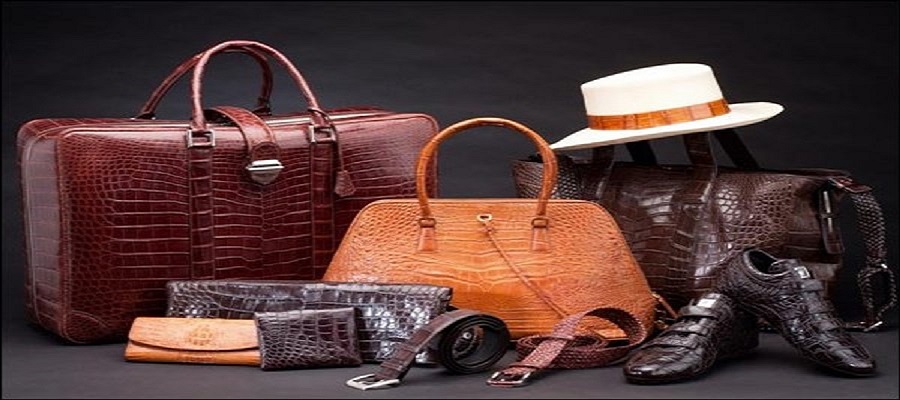
Illustrative image related to artificial leather
Key Industrial Applications of artificial leather
| Industry/Sector | Specific Application of artificial leather | Value/Benefit for the Business | Key Sourcing Considerations for this Application |
|---|---|---|---|
| Automotive | Upholstery for car interiors | Cost-effective, durable, and easier to maintain than genuine leather | Ensure compliance with automotive standards and fire regulations |
| Furniture Manufacturing | Upholstery for residential and commercial furniture | Versatile design options and lower production costs | Source from reputable manufacturers with a variety of textures |
| Fashion and Apparel | Clothing items such as jackets, bags, and footwear | Eco-friendly option appealing to consumers seeking sustainable fashion | Look for suppliers that offer a wide range of colors and finishes |
| Marine Industry | Upholstery for boat interiors and exteriors | Water-resistant and mildew-resistant properties | Verify material durability for marine conditions |
| Healthcare | Upholstery for hospital furniture and equipment | Easy to clean, hygienic, and resistant to stains | Ensure materials meet healthcare regulations and are antimicrobial |
How is Artificial Leather Used in the Automotive Industry?
Artificial leather is widely utilized in automotive upholstery, covering seats, dashboards, and door panels. Its cost-effectiveness, coupled with durability and ease of maintenance, makes it a preferred choice over genuine leather. B2B buyers in the automotive sector should prioritize sourcing materials that comply with industry standards, particularly regarding fire resistance and wear-and-tear longevity. Additionally, the flexibility in design and color allows manufacturers to meet diverse consumer preferences while maintaining a competitive edge.
What are the Benefits of Artificial Leather in Furniture Manufacturing?
In the furniture manufacturing sector, artificial leather is increasingly used for residential and commercial upholstery. It offers a wide range of textures and colors, enabling designers to create aesthetically pleasing products without the high costs associated with genuine leather. For international buyers, sourcing from manufacturers that provide quality assurance and a variety of styles is crucial. This ensures that the final products meet customer demands for both appearance and durability, especially in high-traffic environments.
Why is Artificial Leather Popular in Fashion and Apparel?
The fashion industry has embraced artificial leather for clothing, accessories, and footwear due to its eco-friendly nature and versatility. This synthetic alternative allows brands to appeal to environmentally conscious consumers while offering a wide array of styles and finishes. B2B buyers should focus on suppliers that provide innovative designs and sustainable production methods, as these factors can significantly enhance brand reputation and marketability in regions like Europe and South America, where sustainability is increasingly prioritized.
How is Artificial Leather Beneficial in the Marine Industry?
In the marine industry, artificial leather is favored for boat interiors and exteriors due to its water and mildew-resistant properties. This material not only withstands the harsh marine environment but also provides an attractive finish that enhances the overall aesthetic of the vessel. Buyers in this sector should ensure that the sourced materials are specifically designed for marine applications, focusing on durability and resistance to fading from UV exposure, which is critical for maintaining the appearance and functionality of marine upholstery.
What Role Does Artificial Leather Play in Healthcare Settings?
Artificial leather is extensively used in healthcare for upholstering furniture and equipment, such as waiting room chairs and hospital beds. Its easy-to-clean nature and resistance to stains make it a hygienic choice, crucial for maintaining sanitary conditions in medical environments. B2B buyers should look for materials that meet healthcare regulations, including antimicrobial properties, to ensure safety and compliance. This is particularly important in regions where healthcare standards are stringent, allowing institutions to provide a safe and comfortable environment for patients.
3 Common User Pain Points for ‘artificial leather’ & Their Solutions
Scenario 1: Sourcing Quality Artificial Leather for Diverse Applications
The Problem: B2B buyers often face challenges when sourcing artificial leather that meets the specific needs of their projects, whether for upholstery, fashion, or automotive applications. With numerous suppliers and a plethora of materials available, it can be overwhelming to determine which type of faux leather will deliver the desired aesthetics, durability, and performance. Buyers may struggle with inconsistent quality, leading to dissatisfaction from end-users and potential financial losses.
The Solution: To ensure the right selection, buyers should conduct thorough market research and establish relationships with reputable suppliers known for their quality control. It’s beneficial to request samples of various artificial leather types, such as PU and PVC, to evaluate their texture, flexibility, and color options. Additionally, leveraging supplier catalogs that detail specifications, certifications, and applications can streamline the decision-making process. Engaging in discussions with suppliers about your specific requirements—such as weather resistance for outdoor applications or stain resistance for high-traffic areas—will help narrow down choices and lead to more satisfactory sourcing outcomes.
Scenario 2: Managing Cost-Effectiveness While Ensuring Durability
The Problem: Many B2B buyers are under pressure to minimize costs while still providing high-quality products. They may find that cheaper faux leather options compromise durability and longevity, leading to increased return rates and customer complaints. This balancing act can create a scenario where buyers feel they must sacrifice quality for affordability, jeopardizing their reputation and customer satisfaction.
The Solution: To navigate this dilemma, buyers should explore the total cost of ownership rather than just the upfront cost of materials. Investing in high-quality faux leather, such as PU leather known for its durability and ease of maintenance, can yield better long-term value. It’s advisable to analyze the expected lifespan of the materials in relation to their price. Furthermore, consider negotiating bulk purchase agreements or long-term contracts with suppliers to secure better pricing on high-quality materials. Establishing a partnership with a supplier that offers performance guarantees can also provide peace of mind and reduce the risk associated with cheaper alternatives.
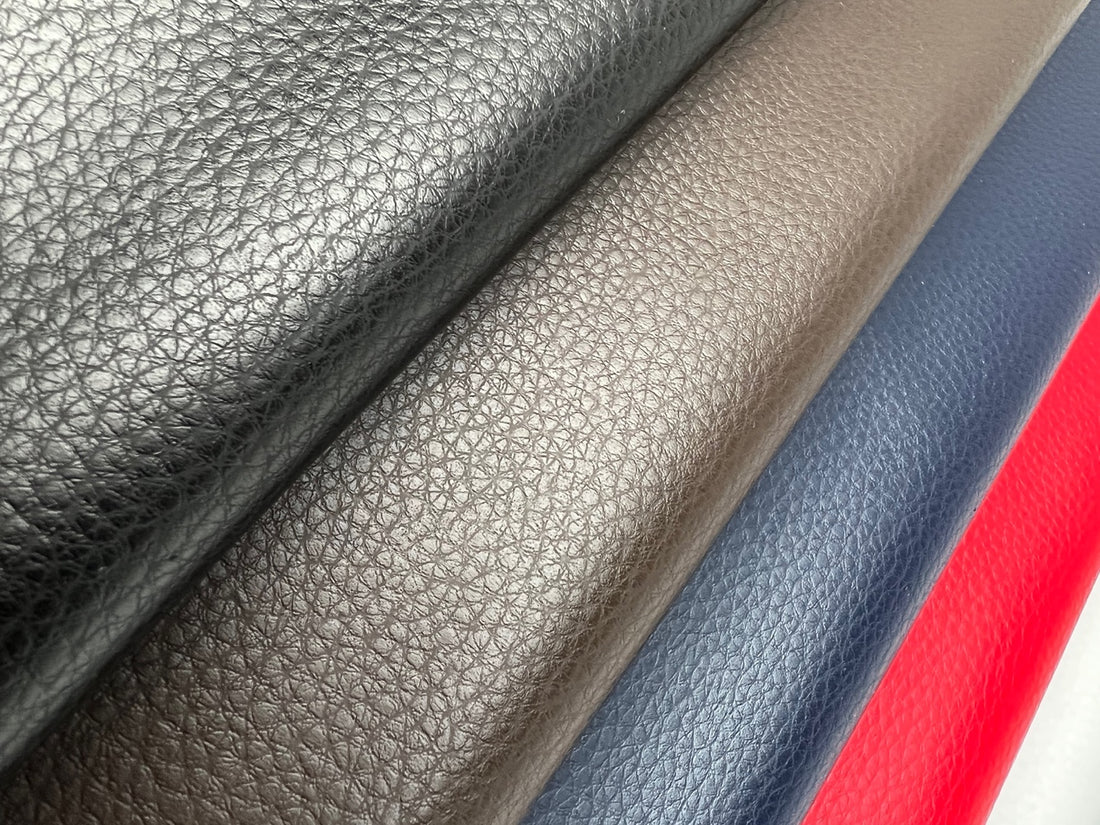
Illustrative image related to artificial leather
Scenario 3: Addressing Environmental Concerns in Artificial Leather Production
The Problem: In an increasingly eco-conscious market, B2B buyers are pressured to select materials that align with sustainability practices. Traditional artificial leather often uses harmful chemicals in its production, which can deter environmentally aware consumers. This creates a conflict for buyers who wish to meet market demand while also adhering to ethical standards.
The Solution: Buyers can mitigate this concern by seeking out suppliers who offer eco-friendly alternatives to conventional faux leather. Materials made from recycled plastics or plant-based polymers, often labeled as “vegan leather” or “bio-based leather,” are becoming more accessible. Establishing a vetting process that includes inquiries about the environmental impact of production processes and certifications such as OEKO-TEX can help ensure compliance with sustainability standards. Additionally, promoting these eco-friendly options can enhance brand image and appeal to a broader customer base, positioning businesses as leaders in sustainability within their industry.
Strategic Material Selection Guide for artificial leather
When selecting materials for artificial leather, international B2B buyers must consider various factors that influence product performance, cost, and suitability for specific applications. This guide analyzes four common materials used in artificial leather production, focusing on their properties, advantages, disadvantages, and implications for buyers in diverse markets such as Africa, South America, the Middle East, and Europe.
What Are the Key Properties of Polyurethane (PU) Leather?
Polyurethane leather, often referred to as PU leather, is a popular choice due to its soft texture and durability. It is produced by coating a fabric backing with a flexible polymer, resulting in a material that is both supple and visually similar to genuine leather. PU leather exhibits excellent abrasion resistance and is less prone to cracking compared to other synthetic options. Its temperature resistance is moderate, making it suitable for various applications, including upholstery and fashion items.
Pros: PU leather is highly versatile and can be produced in numerous colors and textures, making it appealing for diverse markets. It is also easier to clean and maintain than natural leather.
Cons: While PU leather is durable, it may not perform as well under extreme temperatures compared to some other materials. Additionally, its production process can be more complex, potentially leading to higher manufacturing costs.
Impact on Application: PU leather is widely used in furniture, automotive interiors, and fashion accessories. Its compatibility with various media makes it a preferred choice for high-end products.
How Does PVC Leather Compare in Terms of Performance?
Polyvinyl chloride (PVC) leather, commonly known as vinyl, is another widely used artificial leather material. It is created by applying a plastic coating to a fabric base, resulting in a waterproof and stain-resistant surface. PVC leather is less breathable than PU leather, which can affect comfort in certain applications.
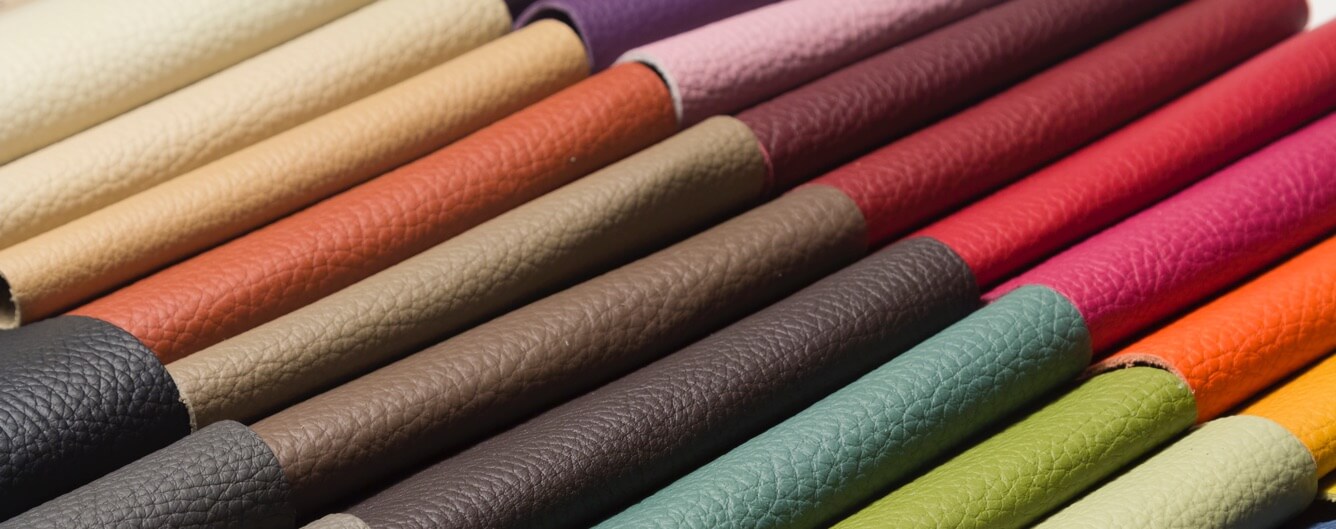
Illustrative image related to artificial leather
Pros: PVC leather is cost-effective, often significantly cheaper than both PU leather and genuine leather. It is also highly resistant to water, mildew, and stains, making it ideal for outdoor and marine applications.
Cons: The lack of breathability can lead to discomfort in clothing and upholstery applications. Additionally, PVC can be less environmentally friendly due to its plastic content.
Impact on Application: PVC leather is commonly used in outdoor furniture, automotive interiors, and protective coverings, where moisture resistance is crucial.
What Are the Benefits and Limitations of Microfiber Leather?
Microfiber leather is a synthetic material made from ultra-fine polyester fibers. It is often designed to mimic the texture and appearance of natural leather while offering superior durability and ease of maintenance. Microfiber leather is breathable, making it suitable for clothing and upholstery.
Pros: This material is highly resistant to wear and tear, easy to clean, and offers a soft touch similar to genuine leather. It is also lightweight, making it ideal for fashion applications.
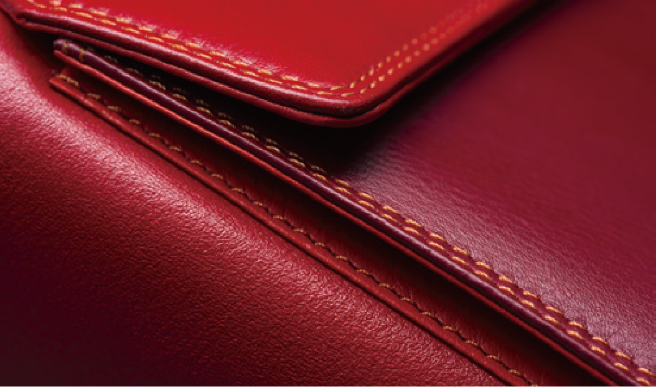
Illustrative image related to artificial leather
Cons: Microfiber leather can be more expensive than PU and PVC options. Its production may require specialized techniques, which could complicate manufacturing processes.
Impact on Application: Microfiber leather is well-suited for high-end fashion items, upholstery, and accessories, appealing to consumers seeking luxury without compromising on sustainability.
What Should International Buyers Consider When Choosing Artificial Leather?
When selecting artificial leather materials, international buyers must consider compliance with local regulations and standards. For instance, ASTM, DIN, and JIS standards may dictate specific performance characteristics required in different regions. Additionally, preferences for sustainable and animal-friendly materials are rising, particularly in Europe and North America. Buyers should also be aware of the varying costs associated with different materials and their implications for pricing strategies in diverse markets.

Illustrative image related to artificial leather
| Materiał | Typical Use Case for artificial leather | Key Advantage | Key Disadvantage/Limitation | Relative Cost (Low/Med/High) |
|---|---|---|---|---|
| Skóra PU | Upholstery, fashion accessories | Soft texture and high durability | Moderate temperature resistance | Medium |
| Skóra PVC | Outdoor furniture, automotive interiors | Cost-effective and waterproof | Low breathability | Low |
| Skóra z mikrofibry | High-end fashion, upholstery | Durable and soft touch | Higher production costs | High |
| Eco-Friendly Leather | Sustainable fashion, upholstery | Environmentally friendly | Limited availability and higher costs | Medium to High |
This strategic material selection guide provides B2B buyers with essential insights into the properties and applications of various artificial leather materials, enabling informed decisions tailored to their specific market needs.
In-depth Look: Manufacturing Processes and Quality Assurance for artificial leather
What Are the Main Stages in the Manufacturing Process of Artificial Leather?
The manufacturing of artificial leather involves several critical stages that ensure the final product meets quality standards and customer expectations. These stages typically include material preparation, forming, assembly, and finishing.
-
Material Preparation:
The process begins with the selection of base materials, which can be polyurethane (PU) or polyvinyl chloride (PVC). These materials are often chosen for their durability and flexibility. The raw materials undergo mixing with additives, such as plasticizers and stabilizers, to enhance their properties. This phase also includes the creation of the backing material, typically a textile fabric that provides support and structure to the final product. -
Forming:
In this stage, the prepared materials are coated with a polymer layer. This is done using techniques such as calendaring or coating, where the polymer is applied to the backing fabric, creating a thin, flexible layer that mimics the texture of genuine leather. The surface may also be embossed with patterns to enhance its aesthetic appeal and to provide a leather-like finish. -
Assembly:
Once the material is formed, it is cut and shaped into the desired dimensions. This stage often involves sewing or bonding the material to create finished products like upholstery, garments, or accessories. Careful attention is paid to ensure that seams are strong and that the material maintains its integrity during this process. -
Finishing:
The final stage involves applying treatments to enhance the product’s properties. This may include water-resistant coatings, stain repellents, and anti-microbial treatments. The finishing process not only improves durability but also enhances the visual appeal of the artificial leather. Quality checks are performed at this stage to ensure that the final product meets specified standards.
How Is Quality Assurance Implemented in Artificial Leather Manufacturing?
Quality assurance (QA) is an essential aspect of the manufacturing process for artificial leather, as it ensures that products are safe, durable, and meet customer specifications. Here are the key components of quality assurance in this industry:
-
International Standards:
Many manufacturers adhere to international standards such as ISO 9001, which focuses on quality management systems. Compliance with such standards helps ensure that manufacturing processes are consistent and that products meet customer and regulatory requirements. Additionally, certifications like CE (Conformité Européenne) may be relevant for products sold in Europe, indicating compliance with safety and health standards. -
Industry-Specific Standards:
Depending on the application of artificial leather, there may be industry-specific standards to consider. For example, automotive-grade materials might need to meet specific automotive industry standards (e.g., API) related to flammability and durability. -
Quality Control Checkpoints:
Quality control (QC) checkpoints are established throughout the manufacturing process. These include:
– Incoming Quality Control (IQC): Inspection of raw materials upon arrival to ensure they meet specifications.
– In-Process Quality Control (IPQC): Monitoring of production processes to identify and rectify issues as they arise.
– Final Quality Control (FQC): Comprehensive testing of finished products before they are shipped to customers.
What Common Testing Methods Are Used to Ensure Quality in Artificial Leather?
To ensure the durability and performance of artificial leather, manufacturers employ various testing methods, including:
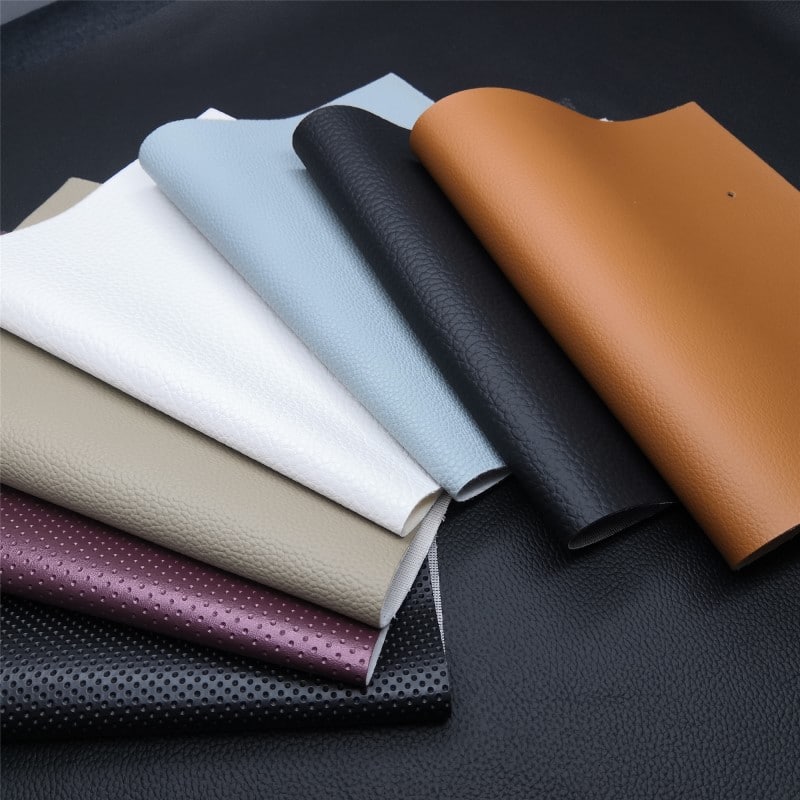
Illustrative image related to artificial leather
-
Physical Tests: These tests assess properties such as tensile strength, tear resistance, and abrasion resistance. These metrics are critical for evaluating the material’s longevity and suitability for various applications.
-
Chemical Tests: These tests evaluate the material’s resistance to stains, moisture, and UV light. This is especially important for products intended for outdoor or high-traffic use.
-
Flammability Tests: For products used in automotive or commercial applications, ensuring compliance with flammability standards is crucial. Testing helps manufacturers verify that their products meet safety requirements.
How Can B2B Buyers Verify Supplier Quality Control Practices?
B2B buyers must conduct due diligence to verify a supplier’s quality control practices. Here are several actionable steps:
-
Supplier Audits: Conducting on-site audits allows buyers to assess the manufacturing processes, quality control systems, and compliance with international standards. This firsthand evaluation can reveal a lot about a supplier’s commitment to quality.
-
Requesting Quality Reports: Buyers should request quality assurance reports, including IQC, IPQC, and FQC documentation. These reports can provide insights into the supplier’s testing methods and the results of their quality checks.
-
Third-Party Inspections: Engaging third-party inspection services can provide an unbiased evaluation of the supplier’s products. These services can conduct random checks and provide detailed reports on the quality of the products.
What Are the Nuances of Quality Control for International B2B Buyers?
For international buyers, particularly from regions such as Africa, South America, the Middle East, and Europe, understanding the nuances of quality control is critical:
-
Cultural Differences: Different regions may have varying approaches to quality assurance and compliance with standards. Buyers should be aware of these differences and how they may impact product quality.
-
Logistical Challenges: International shipping can introduce risks related to the handling and storage of products. Buyers should ensure that suppliers have robust logistics and handling processes to mitigate these risks.
-
Regulatory Compliance: Buyers must be aware of the regulatory standards in their respective countries. This includes understanding import regulations and ensuring that products comply with local safety and environmental regulations.
By understanding the manufacturing processes and quality assurance practices in the artificial leather industry, B2B buyers can make informed decisions that align with their business needs and ensure they source high-quality products.
Practical Sourcing Guide: A Step-by-Step Checklist for ‘artificial leather’
Wprowadzenie
Sourcing artificial leather for your business involves careful consideration of various factors to ensure you receive quality materials that meet your specific needs. This guide provides a step-by-step checklist to streamline your procurement process, helping you make informed decisions while navigating the complexities of the artificial leather market.
Step 1: Define Your Technical Specifications
Before initiating the sourcing process, it’s essential to outline your technical requirements. This includes understanding the type of artificial leather you need—whether it’s PU leather, PVC, or a specialized variant. Determine the necessary attributes such as durability, texture, color, and intended application, as these factors will significantly influence your supplier selection.
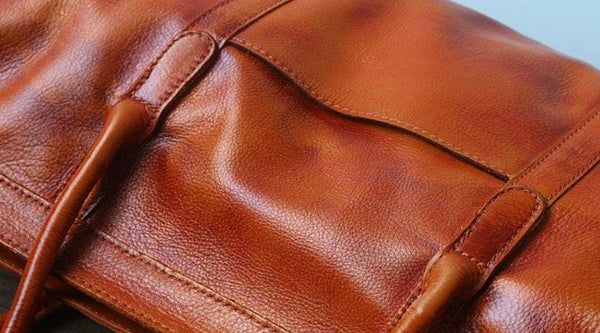
Illustrative image related to artificial leather
- Key Considerations:
- Determine the end-use of the material (e.g., upholstery, fashion, automotive).
- Identify specific performance characteristics like water resistance and ease of cleaning.
Step 2: Research Potential Suppliers
Thorough research is crucial in identifying reputable suppliers. Look for manufacturers and distributors with a proven track record in producing artificial leather products. Use industry directories, trade shows, and online platforms to compile a list of potential partners.
- Tips for Effective Research:
- Check for suppliers with certifications that demonstrate compliance with international quality and safety standards.
- Explore customer reviews and case studies to gauge reliability and service quality.
Step 3: Evaluate Product Samples
Request samples from shortlisted suppliers to assess the quality and suitability of their artificial leather. This hands-on evaluation will help you determine if the material meets your specifications regarding texture, durability, and overall appearance.
- What to Look For:
- Examine the sample for consistency in texture and color.
- Test the material’s flexibility and resistance to wear and tear.
Step 4: Verify Supplier Certifications
Ensure that your chosen suppliers hold relevant certifications that affirm their product quality and ethical practices. Certifications such as ISO, OEKO-TEX, and others indicate compliance with environmental and safety standards.
- Importance of Verification:
- Certifications can enhance your brand reputation by ensuring that the materials used are sustainable and safe.
- It reduces the risk of legal issues related to product safety and environmental impact.
Step 5: Negotiate Pricing and Terms
Once you’ve identified suitable suppliers, engage in negotiations to discuss pricing, minimum order quantities, and payment terms. Establishing clear terms upfront can prevent misunderstandings later on and ensure that both parties are aligned on expectations.
- Negotiation Tips:
- Compare quotes from multiple suppliers to ensure competitive pricing.
- Consider negotiating for bulk discounts or favorable payment terms based on your order volume.
Step 6: Assess Logistics and Supply Chain Reliability
Evaluate the logistics capabilities of your suppliers, including their shipping options, delivery timelines, and inventory management. Reliable logistics are crucial for maintaining your production schedules and ensuring timely delivery of materials.
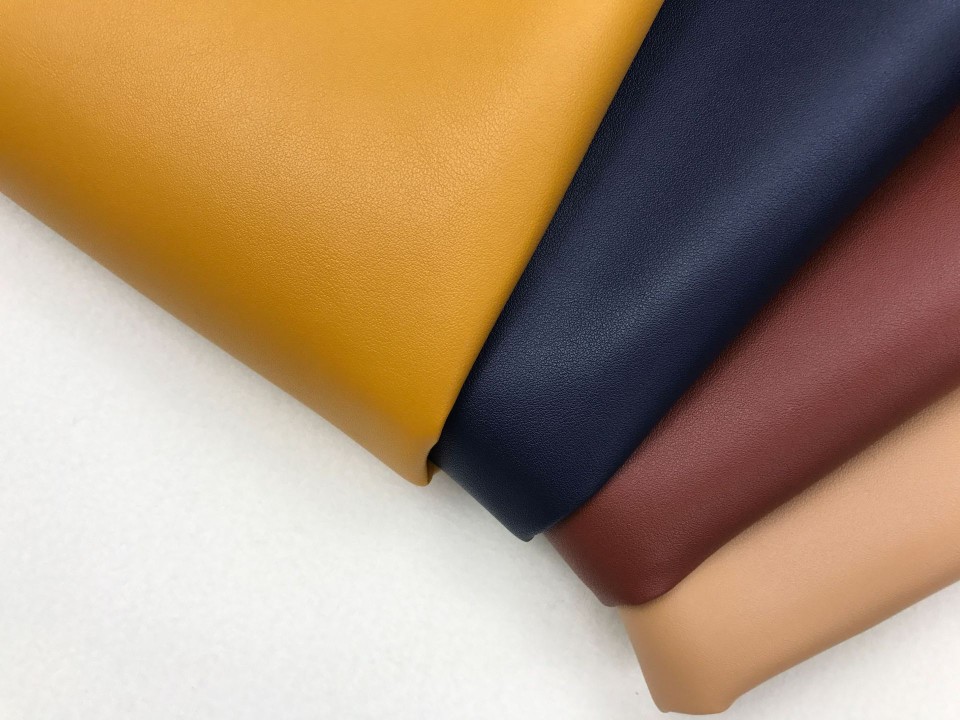
Illustrative image related to artificial leather
- Logistics Considerations:
- Inquire about the supplier’s ability to meet your delivery deadlines consistently.
- Assess their capacity to handle fluctuations in order volume.
Step 7: Establish a Quality Control Process
After finalizing your supplier, develop a quality control plan to monitor the materials received. This should include procedures for inspecting shipments upon arrival and regular assessments throughout your partnership.
- Quality Control Essentials:
- Define specific quality metrics that the artificial leather must meet.
- Schedule periodic reviews to ensure ongoing compliance with your standards.
By following this checklist, B2B buyers can streamline their sourcing process for artificial leather, ensuring they partner with the right suppliers and obtain materials that meet their needs effectively.
Comprehensive Cost and Pricing Analysis for artificial leather Sourcing
What Are the Key Cost Components in Artificial Leather Sourcing?
Understanding the cost structure of artificial leather is essential for B2B buyers looking to make informed purchasing decisions. The primary cost components include materials, labor, manufacturing overhead, tooling, quality control (QC), logistics, and profit margins.
-
Materials: The base materials for artificial leather, such as polyurethane (PU) or polyvinyl chloride (PVC), significantly influence cost. The quality and source of these materials can vary, impacting overall pricing. For example, PU leather typically offers a more luxurious feel at a higher price point compared to PVC.
-
Labor: Labor costs can differ based on the manufacturing region. Countries with lower labor costs, such as certain Southeast Asian nations, can offer competitive pricing, while European manufacturers might incur higher labor expenses.
-
Manufacturing Overhead: This includes expenses related to the production facility, utilities, and equipment maintenance. Factories with advanced technology may have higher overhead costs but can achieve better efficiency and quality.
-
Tooling: Custom tooling for specific designs or textures can add to initial costs. However, investing in tooling can lead to long-term savings through improved production efficiency.
-
Quality Control (QC): Ensuring that artificial leather meets specific standards requires a robust QC process. This can involve additional costs but is crucial for maintaining product integrity, especially for international markets where quality certifications are often mandatory.
-
Logistics: Shipping costs vary based on the distance from the manufacturing site to the buyer. Incoterms (International Commercial Terms) also play a role; for instance, CIF (Cost, Insurance, and Freight) includes shipping costs in the overall price, while FOB (Free on Board) may require buyers to handle logistics.
-
Margin: Suppliers will add a margin based on their operational costs and desired profit levels. Understanding typical margins in your region can aid in negotiating better prices.
How Do Price Influencers Affect Artificial Leather Costs?
Several factors can influence the pricing of artificial leather, particularly for B2B buyers in diverse regions such as Africa, South America, the Middle East, and Europe.
-
Volume/MOQ (Minimum Order Quantity): Larger orders often lead to reduced per-unit costs. Suppliers are generally willing to offer discounts for bulk purchases, making it advantageous for buyers to plan their procurement strategically.
-
Specifications and Customization: Customized designs or unique specifications can lead to increased costs. Buyers should weigh the benefits of custom features against the price increase.
-
Materials and Quality Certifications: The choice of materials directly impacts pricing. Additionally, certifications (such as eco-friendly standards) may require extra processing, influencing the final cost.
-
Supplier Factors: The reputation and reliability of a supplier can also affect pricing. Established suppliers with a history of quality may command higher prices, but the assurance of consistent supply and quality can justify the investment.
-
Incoterms: Understanding Incoterms is crucial for managing total costs. Different terms can shift the responsibility for shipping and insurance, affecting the final price.
What Buyer Tips Can Help Optimize Artificial Leather Sourcing Costs?
B2B buyers can adopt several strategies to optimize their sourcing of artificial leather:
-
Negotiation: Engage in discussions with suppliers to negotiate pricing based on order volume and long-term partnerships. Don’t hesitate to ask for discounts or favorable payment terms.
-
Cost-Efficiency: Evaluate the Total Cost of Ownership (TCO) rather than focusing solely on the initial purchase price. Consider factors like durability, maintenance, and potential waste in your calculations.
-
Pricing Nuances for International Buyers: Be aware of regional pricing differences and currency fluctuations. Buyers from Africa, South America, and the Middle East should account for potential import duties and taxes, which can impact total costs.
-
Research and Compare Suppliers: Conduct thorough research on various suppliers to compare prices and quality. Use industry reports and trade shows to identify competitive options.
Disclaimer on Pricing
It is essential to note that prices for artificial leather can vary widely based on the factors mentioned above. The figures provided in this analysis are indicative and should be verified with suppliers to obtain accurate and current pricing tailored to specific needs.
Alternatives Analysis: Comparing artificial leather With Other Solutions
Introduction: Exploring Alternatives to Artificial Leather
As businesses seek sustainable and cost-effective materials for upholstery, fashion, and various industrial applications, artificial leather emerges as a popular choice. However, various alternatives exist, each with unique advantages and drawbacks. This analysis will compare artificial leather against two viable alternatives: genuine leather and textile-based options, providing insights for B2B buyers looking to make informed decisions.
Comparison Table
| Comparison Aspect | Sztuczna skóra | Genuine Leather | Textile-Based Options |
|---|---|---|---|
| Performance | Durable, water-resistant, versatile in design | Highly durable, luxurious feel | Varies widely; can be less durable |
| Cost | 75% less expensive than genuine leather | Higher initial investment | Generally low-cost, varies by fabric |
| Ease of Implementation | Readily available, easy to work with | Requires skilled labor for cutting and sewing | Easy to source and use |
| Maintenance | Easy to clean, stain-resistant | Requires regular conditioning | Typically machine washable, but may wear quickly |
| Best Use Case | Upholstery, fashion, automotive | Luxury goods, high-end furniture | Casual wear, home textiles |
Detailed Breakdown of Alternatives
Genuine Leather: Is it Worth the Investment?
Genuine leather is often considered the gold standard in terms of aesthetics and durability. It offers a luxurious feel and can last for decades with proper care. However, the higher cost and the ethical implications of animal sourcing may deter some buyers. Additionally, genuine leather requires regular maintenance to prevent cracking and drying out, making it less convenient for high-traffic applications. While it can provide a premium appearance, the investment may not align with every business’s budget or values.
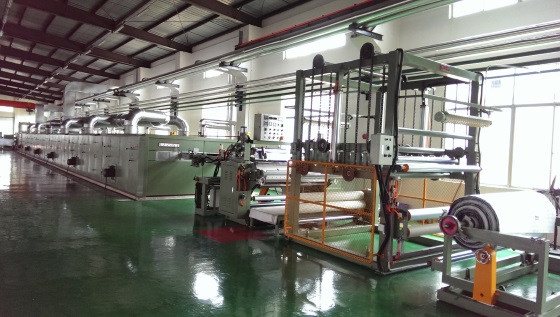
Illustrative image related to artificial leather
Textile-Based Options: What Are the Benefits?
Textile-based options, such as cotton or polyester blends, offer an affordable alternative to both artificial and genuine leather. These materials are often lightweight and come in a myriad of designs and colors, making them suitable for casual apparel and home textiles. However, their durability can be variable, often leading to wear and tear more quickly than leather alternatives. While they are generally easy to clean, they may not offer the same level of water resistance or stain protection as artificial leather, potentially limiting their applications in more demanding environments.
Conclusion: How to Choose the Right Solution for Your Needs
When selecting the best material for your business, consider factors such as budget, intended use, and maintenance requirements. Artificial leather is an excellent option for those seeking a cost-effective, low-maintenance solution without sacrificing style. Genuine leather may be appropriate for high-end applications where luxury is paramount, while textile-based options can cater to more casual or budget-conscious markets. By evaluating these alternatives, B2B buyers can make informed decisions that align with their operational goals and customer expectations.
Essential Technical Properties and Trade Terminology for artificial leather
What Are the Key Technical Properties of Artificial Leather?
When evaluating artificial leather, understanding its technical properties is essential for making informed purchasing decisions. Here are several critical specifications that B2B buyers should consider:
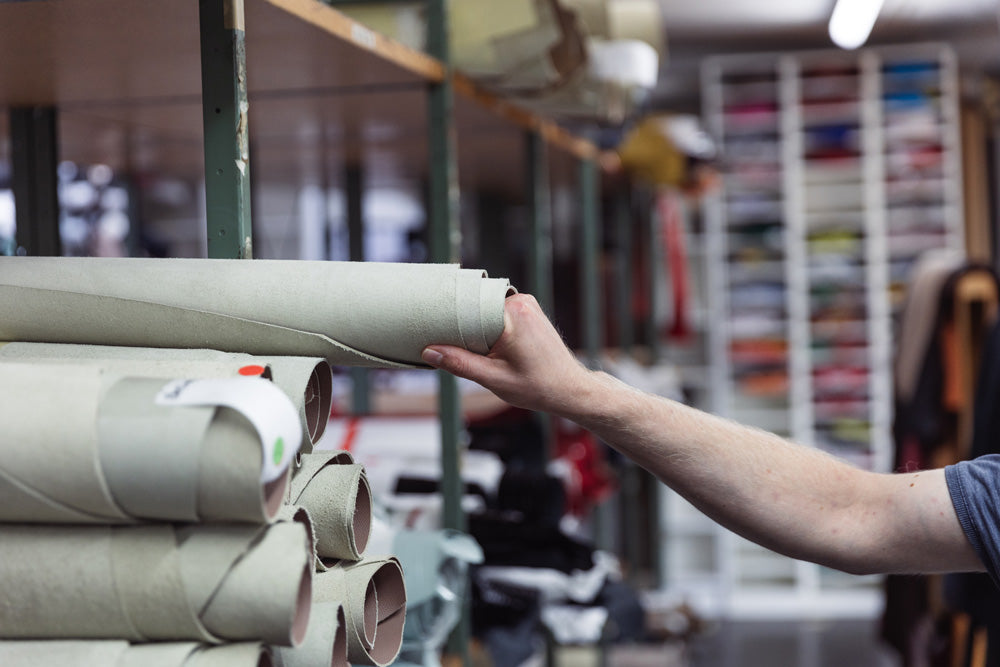
Illustrative image related to artificial leather
-
Material Composition
Artificial leather can be composed of various materials, most commonly polyurethane (PU) and polyvinyl chloride (PVC). PU is often preferred for its soft texture and durability, closely mimicking genuine leather. The choice of material affects not only the feel and appearance but also the product’s sustainability and cost-effectiveness, making it crucial for buyers to assess the intended use and environmental considerations. -
Durability Ratings
Durability is a key factor in artificial leather, often measured through abrasion resistance tests. A higher durability rating indicates better resistance to wear and tear, which is vital for applications like automotive interiors or commercial furniture. Buyers should evaluate these ratings to ensure the longevity of their investment, especially in high-traffic environments. -
Water Resistance and Maintenance
Many faux leather materials are designed to be water-resistant, stain-resistant, and mildew-resistant. This property simplifies maintenance and cleaning processes, making artificial leather a favorable option for various applications, from upholstery to marine uses. Understanding the cleaning requirements can help businesses reduce long-term maintenance costs. -
Colorfastness
Colorfastness refers to the material’s ability to retain its color when exposed to light, moisture, and cleaning agents. This property is crucial for maintaining the aesthetic appeal of products over time, especially in applications where the material may face sun exposure or frequent cleaning. Buyers should request colorfastness ratings to ensure their products maintain visual integrity. -
Thickness and Weight
The thickness and weight of artificial leather can influence its application. Thicker materials may offer better durability and protection, while lighter options may be more suitable for clothing or accessories. Buyers must consider the end use to select the appropriate thickness, ensuring that the product meets performance expectations without compromising comfort or usability.
What Are Common Trade Terms in the Artificial Leather Industry?
Familiarity with industry jargon is essential for effective communication and negotiation in the artificial leather market. Here are some key terms that B2B buyers should know:
-
OEM (Original Equipment Manufacturer)
OEM refers to companies that manufacture products based on the specifications provided by another company, often a brand owner. In the context of artificial leather, OEM partnerships can facilitate custom designs and specifications, allowing businesses to differentiate their products in the marketplace. -
MOQ (Minimum Order Quantity)
MOQ is the minimum amount of product that a supplier is willing to sell. Understanding MOQ is crucial for buyers to manage inventory effectively and ensure that they are purchasing sufficient quantities to meet their operational needs without overextending their budget. -
RFQ (Request for Quotation)
An RFQ is a formal document sent to suppliers requesting pricing, terms, and conditions for specified products or services. Submitting an RFQ allows buyers to compare offerings from multiple suppliers, ensuring they receive competitive pricing and favorable terms. -
Incoterms (International Commercial Terms)
Incoterms define the responsibilities of buyers and sellers in international trade, including who is responsible for shipping, insurance, and tariffs. Knowledge of Incoterms helps B2B buyers navigate logistical challenges and clarify the terms of sale, reducing the risk of misunderstandings in transactions. -
Lead Time
Lead time refers to the period between placing an order and receiving the goods. Understanding lead times is essential for buyers to plan inventory and production schedules effectively. Longer lead times may affect operational efficiency, making it vital to factor this into procurement decisions.
By understanding these technical properties and trade terms, B2B buyers in the artificial leather market can make more informed decisions, ultimately leading to better procurement outcomes and enhanced product offerings.
Navigating Market Dynamics and Sourcing Trends in the artificial leather Sector
What Are the Current Market Dynamics and Key Trends in the Artificial Leather Sector?
The artificial leather market is witnessing robust growth driven by several global factors. The increasing demand for sustainable and cost-effective materials across various industries, including fashion, automotive, and furniture, is propelling the adoption of faux leather. International B2B buyers, especially from regions like Africa, South America, the Middle East, and Europe, are increasingly seeking alternatives to genuine leather due to its high costs and ethical concerns related to animal welfare. The rise of e-commerce platforms has also made sourcing faux leather more accessible, allowing businesses to order materials by the yard rather than committing to full hides.
Emerging technologies such as digital printing and advanced manufacturing techniques are transforming the production of artificial leather. This innovation allows for enhanced customization, offering a wider array of textures, colors, and finishes to meet diverse consumer preferences. Buyers should also be aware of the shift towards polyurethane (PU) leather, which has gained popularity for its softness and durability compared to traditional PVC options. As a result, understanding these trends will equip international buyers with the knowledge necessary to make informed sourcing decisions.
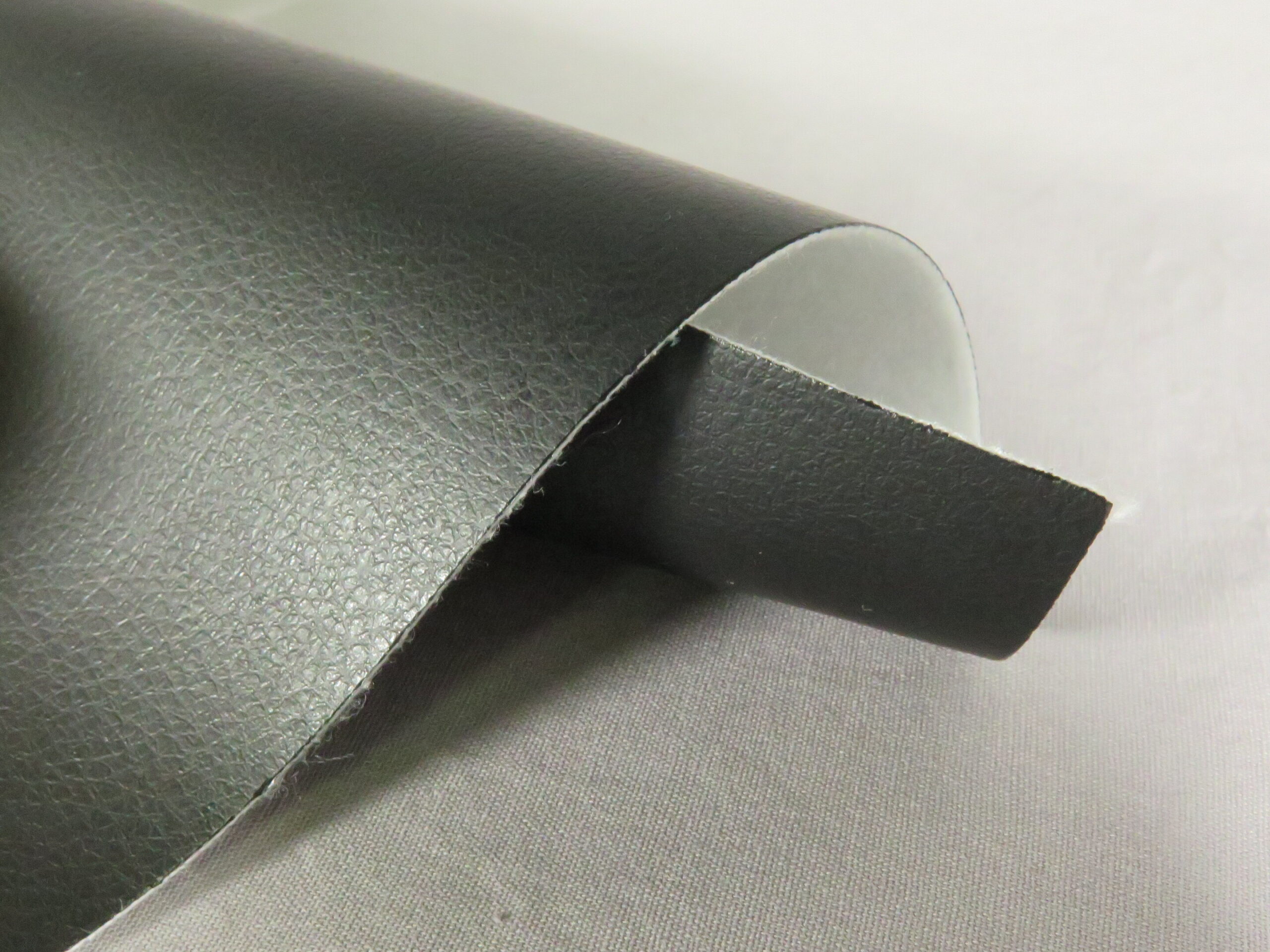
Illustrative image related to artificial leather
How Is Sustainability Influencing Sourcing Decisions in the Artificial Leather Market?
Sustainability is becoming a critical factor in B2B sourcing decisions within the artificial leather sector. The environmental impact of traditional leather production, which involves significant water use and chemical pollution, has led to a growing demand for eco-friendly alternatives. Artificial leather, particularly when made from recycled materials or bio-based components, presents a more sustainable choice that aligns with corporate social responsibility initiatives.
Ethical sourcing is increasingly important, as buyers prioritize suppliers who adhere to responsible manufacturing practices. Certifications such as Global Recycle Standard (GRS) and OEKO-TEX® can help businesses ensure they are sourcing materials that meet environmental and social standards. By focusing on suppliers who prioritize sustainable practices, companies can enhance their brand image and appeal to environmentally-conscious consumers. This shift towards sustainability is not just a trend; it is becoming a fundamental aspect of the sourcing process that can influence market positioning and customer loyalty.
What Is the Historical Context of Artificial Leather Development and Its Impact on the Current Market?
The evolution of artificial leather dates back to the early 20th century, with the invention of materials like Naugahyde in the 1920s, which aimed to replicate the look and feel of genuine leather at a fraction of the cost. Over the decades, advancements in synthetic materials, particularly polyurethane (PU) and polyvinyl chloride (PVC), have led to a broad range of faux leather products that are durable and versatile.
Today, China stands as the largest producer and exporter of artificial leather, supplying a global market that is rapidly expanding. The historical context of artificial leather development underscores its role as a viable alternative to traditional leather, driven by economic factors and changing consumer preferences. Understanding this evolution is essential for B2B buyers as it highlights the potential for innovation and the importance of adapting to market demands. As the industry continues to grow, staying informed about historical trends can provide valuable insights for strategic sourcing decisions.
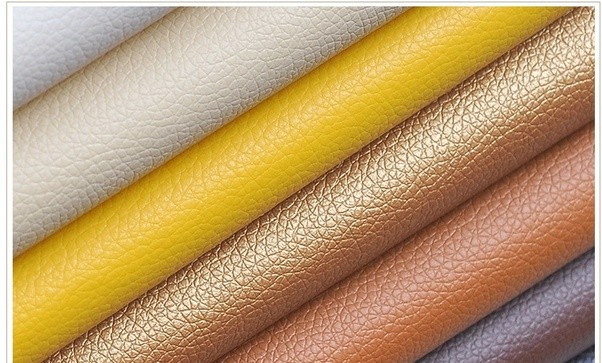
Illustrative image related to artificial leather
Frequently Asked Questions (FAQs) for B2B Buyers of artificial leather
-
How do I choose the right type of artificial leather for my project?
Selecting the appropriate artificial leather depends on the intended application. Consider factors like durability, texture, and ease of maintenance. For upholstery, PU leather is often recommended due to its soft feel and durability, while PVC options may be better for outdoor use due to their water resistance. Assess the specific requirements of your project, such as color preferences and design specifications, to ensure you choose a material that meets your needs effectively. -
What are the common applications of artificial leather in various industries?
Artificial leather is widely used across numerous sectors, including automotive, furniture, fashion, and marine applications. In automotive, it’s favored for its durability and ease of cleaning, while in furniture, it offers a cost-effective alternative to genuine leather. Additionally, it’s increasingly popular in fashion accessories and apparel, providing a vegan-friendly option. Understanding the specific use cases can help you identify the best type of artificial leather for your business needs. -
How can I ensure the quality of artificial leather from suppliers?
To guarantee the quality of artificial leather, conduct thorough supplier vetting. Request samples to assess texture, durability, and color fastness. Check for certifications that indicate compliance with international standards, such as ISO or REACH, which ensure safety and environmental responsibility. Additionally, consider suppliers with a solid reputation in the market and positive reviews from other B2B buyers to minimize risks. -
What customization options are available when sourcing artificial leather?
Many manufacturers offer customization options, including bespoke colors, textures, and patterns. Discuss your specific requirements with potential suppliers to determine their capabilities. Customization may involve minimum order quantities (MOQs) and additional lead times, so clarify these details upfront. Tailoring the product to meet your brand identity can enhance your market competitiveness. -
What are the typical minimum order quantities (MOQs) for artificial leather?
MOQs for artificial leather can vary significantly based on the supplier and the specific product. Generally, MOQs may range from 100 to 500 yards, especially for custom orders. For standard products, lower MOQs might be acceptable. Always confirm with the supplier to ensure the order aligns with your production needs and budget constraints. -
What payment terms should I expect when sourcing artificial leather internationally?
Payment terms can vary by supplier and region, but common practices include upfront payments, letters of credit, or payment upon delivery. Many suppliers may require a deposit (usually 30%) before commencing production, with the balance due prior to shipping. Ensure you negotiate terms that are favorable and secure for both parties, and consider using escrow services for added protection in international transactions. -
How do logistics and shipping impact the cost of artificial leather procurement?
Logistics and shipping can significantly influence the overall cost of artificial leather procurement. Factors such as shipping distance, method (air vs. sea), and customs duties must be considered. For bulk orders, sea freight is often more economical, while air freight is faster but costlier. Collaborate with your supplier to explore the most cost-effective shipping options and understand any potential delays in transit. -
What should I know about the environmental impact of artificial leather?
Understanding the environmental impact of artificial leather is crucial for ethical sourcing. While synthetic leathers like PU are often marketed as more eco-friendly compared to genuine leather, they still involve plastics that can have negative environmental effects. Look for suppliers who utilize sustainable practices, such as using recycled materials or eco-friendly production methods. This not only aligns with growing consumer demand for sustainable products but also enhances your brand’s reputation in the marketplace.
Top 4 Artificial Leather Manufacturers & Suppliers List
1. Sallie Tomato – Faux Leather Collection
Domain: sallietomato.com
Registered: 2015 (10 years)
Introduction: Faux Leather by Sallie Tomato is a vegan material that serves as an affordable alternative to leather or cork fabric. It is soft, pliable, and available in eight textures: Weave, Pebble, Legacy, Shimmer, Crocodile, Alligator, Ostrich, and Rugged. Select Faux Leathers are also available in Lite Legacy, an ultra-thin material. The fabric is sold by quarter yard, with 66 products available in various…
2. Sewport – Faux Leather
Domain: sewport.com
Registered: 2015 (10 years)
Introduction: Faux leather, also known as synthetic leather, is a petroleum-based alternative to genuine leather. It is soft to the touch, water-resistant, and highly resistant to stains, making it easy to clean. While less durable than real leather, it is resistant to abrasions and cuts, ideal for upholstery in homes with children or pets. Faux leather can be produced in various colors and is popular for outer…
3. Nevotex – Artificial & Synthetic Leather
Domain: nevotex.com
Registered: 1999 (26 years)
Introduction: Artificial & synthetic leather for public environment, furniture: chairs & sofas
4. Decorative Fabrics Direct – PU Leather & Faux Leather
Domain: decorativefabricsdirect.com
Registered: 2004 (21 years)
Introduction: PU Leather & Faux Leather | Vinyl Upholstery Fabric. Terms: Free Shipping Coupon Code: SHIPFREE for Most $199 Orders. Available for wholesale purchase by the yard or full roll from brands like Naugahyde, Omnova Boltaflex, Nassimi, and Spradling. Suitable for furniture, automotive, marine, and commercial use. Fabric types include Vinyl (PVC), Urethane, and Polycarbonate. Color options include Black…
Strategic Sourcing Conclusion and Outlook for artificial leather
In the rapidly evolving market for artificial leather, strategic sourcing remains a crucial component for international B2B buyers. The versatility and affordability of faux leather make it an attractive alternative to genuine leather, particularly for applications in upholstery, fashion, and automotive industries. By leveraging a diverse range of suppliers, including those specializing in PU and PVC materials, businesses can secure high-quality products that meet their specific needs while optimizing cost efficiency.
As global demand for sustainable and animal-friendly materials increases, sourcing artificial leather from reputable manufacturers can also enhance a company’s brand reputation. Buyers in regions such as Africa, South America, the Middle East, and Europe should consider establishing long-term partnerships with suppliers that offer innovative textures and finishes, ensuring they stay ahead of market trends.
Looking forward, the artificial leather market is poised for growth, driven by advancements in manufacturing technologies and increasing consumer preference for sustainable options. Now is the time for B2B buyers to engage with suppliers who can provide not only competitive pricing but also quality assurance and customization capabilities. Embrace the opportunities that artificial leather presents and position your business for success in this dynamic landscape.
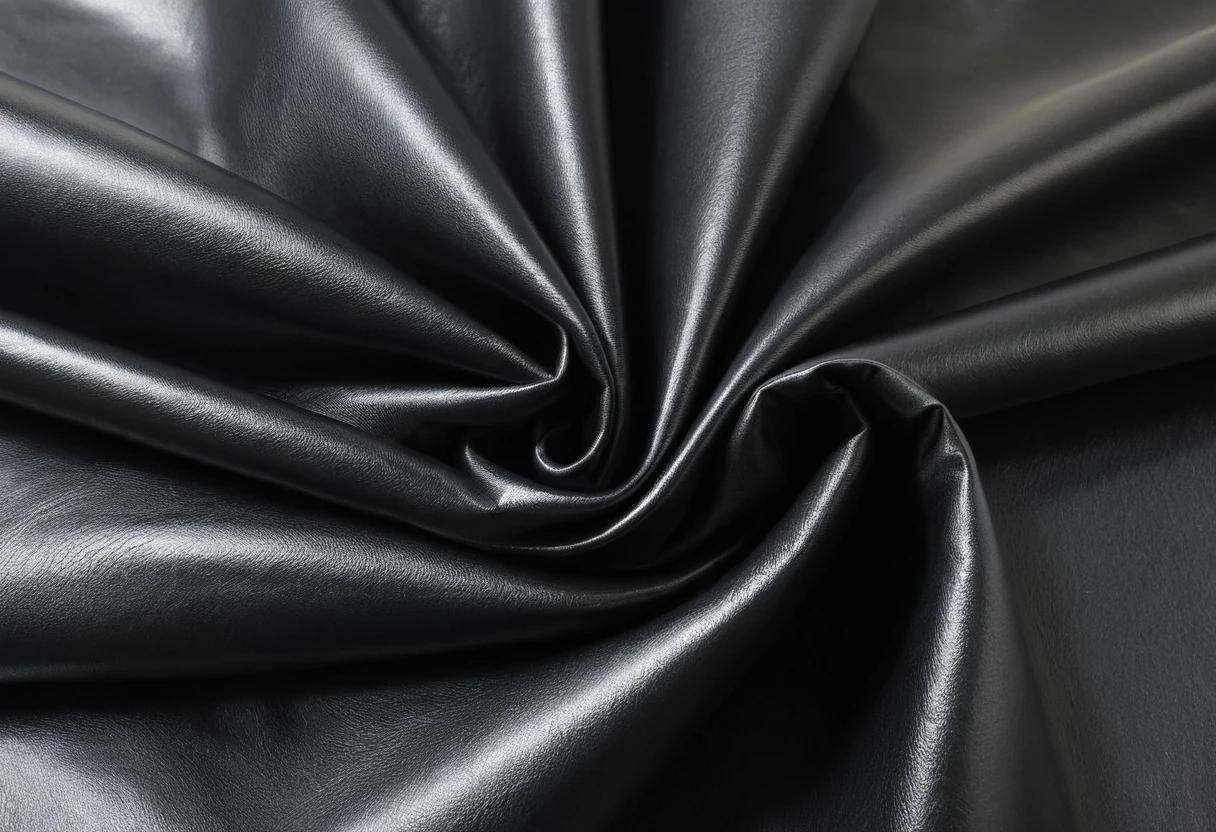
Illustrative image related to artificial leather
Important Disclaimer & Terms of Use
⚠️ Important Disclaimer
The information provided in this guide, including content regarding manufacturers, technical specifications, and market analysis, is for informational and educational purposes only. It does not constitute professional procurement advice, financial advice, or legal advice.
While we have made every effort to ensure the accuracy and timeliness of the information, we are not responsible for any errors, omissions, or outdated information. Market conditions, company details, and technical standards are subject to change.
B2B buyers must conduct their own independent and thorough due diligence before making any purchasing decisions. This includes contacting suppliers directly, verifying certifications, requesting samples, and seeking professional consultation. The risk of relying on any information in this guide is borne solely by the reader.


